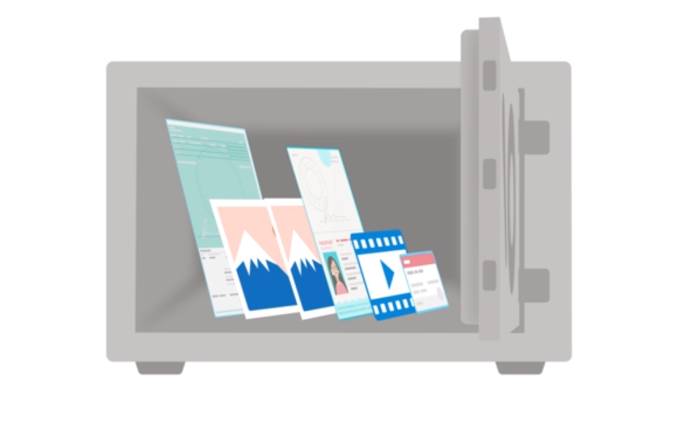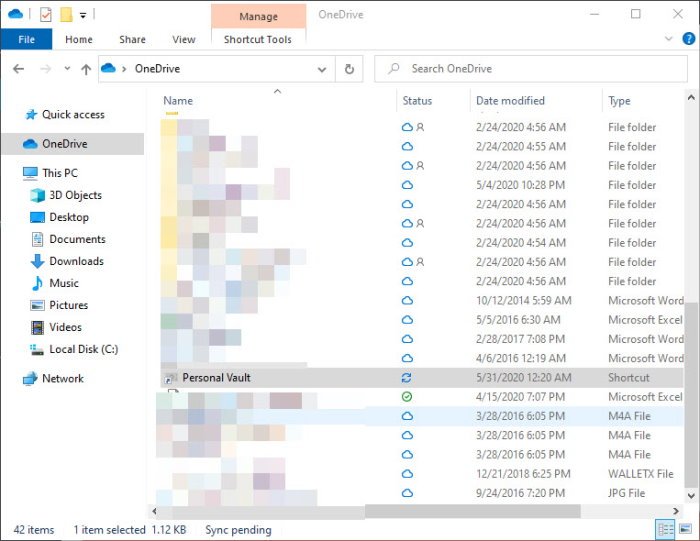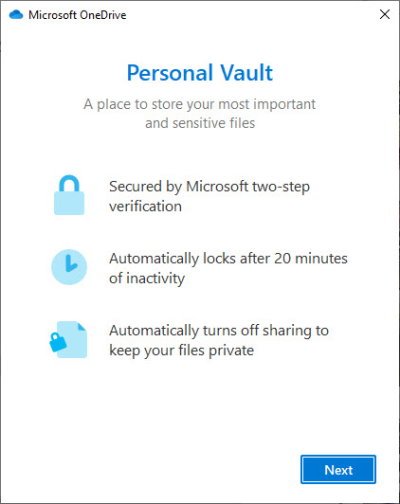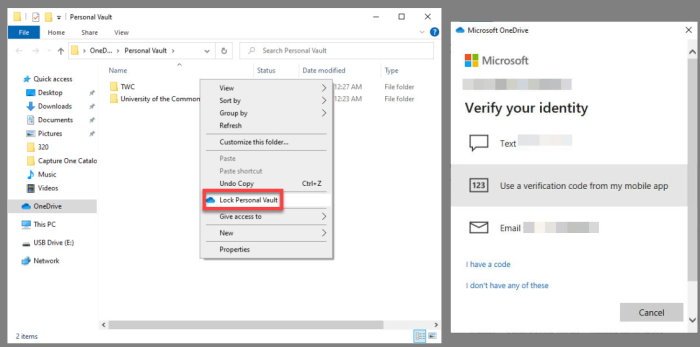Microsoft OneDrive now has what is called a Personal Vault, and from what we can tell, it is a great spot to save your personal files. Personal Vault encrypts all files uploaded, but that’s not all since it takes advantage of two-factor authentication. Now, the feature became available to everyone last year and can be accessed by PC, mobile devices, and on the web.
Secure files with OneDrive Personal Vault

The software giant created this section primarily for security. It’s more secure than other sections of OneDrive, so for those with sensitive files, the best spot to store them is in the Personal Vault.
When its time to gain access to the Personal Vault, users are required to log-in by using two-factor authentication, fingerprint authentication, Windows Hello, PIN, or even facial authentication. After 20 minutes of inactivity, the vault will lock itself, which will force the user to reauthenticate once more.
Additionally, if you prefer to access the Personal Vault via the website, the page will never be cached by the web browser.
We should point out that on Windows 11/10, the Personal Vault stores and encrypt files via Bitlocker-encrypt. This will work the same even if Windows Home is being used, and as we already know, the Home version of Windows doesn’t come with Bitlocker support.
Additionally, files stored in the Personal Vault cannot be shared with anyone, which immediately adds another level of security.
- Microsoft 365 is required for the best experience
- Let’s look at how to use the Personal Vault
1] Microsoft 365 is required for the best experience
Here’s the thing, the free version of OneDrive supports the Personal Vault, but users can only store up to three files in it. A smart person could upload multiple files in three ZIP files and store them in the vault, but if that is not adequate, then the best option is to subscribe to Microsoft 365.
By subscribing, you get the luxury of storing any number of files to the Personal Vault without having to do the ZIP trick.
TIP: You can protect Files or Folders from being deleted accidentally.
2] Let’s look at how to use the Personal Vault

Finally using the vault is super easy. From within the Windows 10 operating system, click on the OneDrive folder located in the File Explorer, then scroll down until you come across Personal Vault.
Fire up the vault, then go through the set-up process which shouldn’t take a long time. The process includes a small description as seen from the image below, but the rest is pretty simple and straightforward.

After clicking on the blue button that says Next, you should then be brought to a small window that requests the user to verify their identity. Click on that button, and from there, a new window should appear with several ways to identify yourself.
From the images below, you can see we have options such as verifying by email, or phone number. These are regular two-factor authentication options, but you might not be like us so therefore, keep an eye out for Windows Hello if that is something you use.

When the verification is completed in full, the OneDrive Personal Vault folder will automatically open. Simply add any file you want to it, and the system will immediately add encryption. To lock the folder, you can stay inactive for 20 minutes or right-click from within the vault and select “Lock Personal Vault.”
Keep in mind that after the setup process, two-factor authentication is required to sign in
Read Next: How to use OneDrive to access your files on your Windows PC